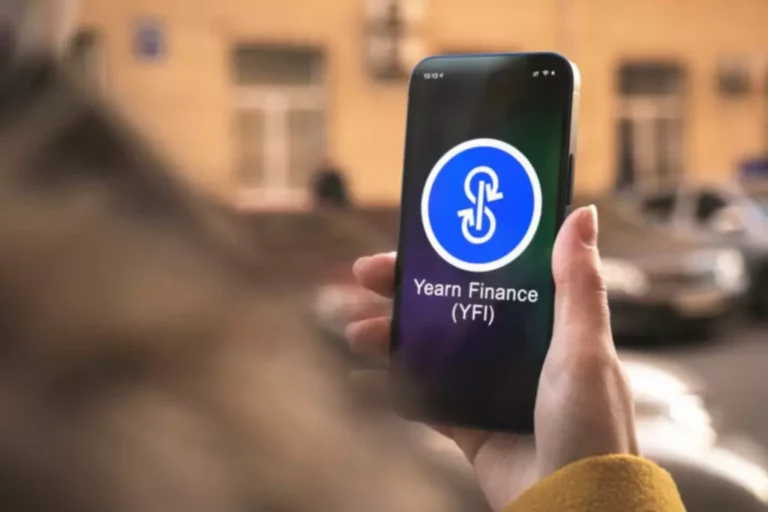What Are Blockchain Bridges and Why Do They Keep Getting Hacked?
If you’re looking for a crypto bridge, you’re in luck since there’s a wealth of options available on the market. Of course, the most important factor when choosing a bridge is making sure that it supports all the blockchains that you’re trying to bridge tokens to. Hackers have focused on blockchain bridges as they store a large amount of value in the form of tokens. As per CoinTelegraph, over $2.5 billion has been stolen from blockchain bridges in the past two years.
- The locally verified blockchain bridge solution assumes that each party to a cross-chain exchange assumes responsibility for verifying their counterparty.
- Interoperability refers to the capacity of blockchains, which share the same underlying architecture, to communicate with one another in order to facilitate information sharing.
- When selecting the best cross-chain bridges for crypto transfers, we considered liquidity, number of supported blockchains, the quality of the interface and other factors.
- For instance, the DeFi protocol Orca is available only on Solana, but supports a wrapped version of ETH.
- Look for bridges that have undergone third-party audits, have a proven security and reliability track record, and are transparent about their governance and security practices.
Contrary to their name, trustless bridges generally are considered a safer option. They are based on smart contracts rather than a centralized protocol, and users have full control of their funds. Decentralized bridges incentivize broad participation and achieve transparency by eliminating interference from any centralized authority.
Centralized or Trusted Blockchain Bridge
Solana has huge appeal as a layer one chain given the significant throughput it can achieve, with 50,000 transactions per second, compared to Ethereum with just 30. As Solana and its ecosystem have developed the need for bridges quickly emerged. This platform was developed by the Germany-based Tixl organization, which rebranded as the Autobahn Network in March 2022. Cross-Chain Bridge has support for bridging both tokens and NFTs across multiple networks. For example, some Ethereum dapps are not available on the Polygon Bridge, which limits its scaling efficacy. Custodial bridges require users to place their trust in a central entity to properly and safely operate the system.
This type of bridge works like a real blockchain, with individual networks contributing to transaction validation. Trustless bridges can provide users with a better sense of security and also more flexibility when moving cryptocurrency. These bridges operate only via a collection of smart contracts allowing users to bridge tokens across blockchains. Seamless transfer of assets to and fro different blockchain networks can also help developers overcome conventional barriers in dApps development. As the popularity of blockchain applications such as DeFi apps, NFTs and DAOs continue to grow; bridges can offer seamless user experiences. Dive deeper into the domain of web3 and find out the significance of a blockchain bridge for the future now.
Trustless Blockchain Bridges
LogRocket is like a DVR for web and mobile apps, recording everything that happens in your web app or site. Blockchain technology has the potential to improve a variety of information systems. But, the basis for its blockchain bridge widespread adoption lies squarely with the evolution of cross-chain technology. However, because each sidechain is isolated, any security impairment will only affect the sidechain itself and not the main chain.

The simplest way to implement a bridge is to use some trusted authority to monitor the source blockchain for messages emitted by relevant smart contracts and relay them to the target blockchain. Yet, none of these independent networks can natively communicate with each other. Without blockchain bridges, a user holding native ETH cannot take advantage of the opportunities Solana’s or Terra’s blossoming DeFi infrastructures present. As the cost to use the network has increased over the years in tandem with the demand for block space, the need for alternate networks became increasingly apparent.
What Are Blockchain Bridges and How Do They Work?
Bridges facilitate communication between blockchains through the transfer of information and assets. Web3 has evolved into an ecosystem of L1 blockchains and L2 scaling solutions, each designed with unique capabilities and trade-offs. As the number of blockchains protocols increases, so does the demand to move assets across chains(opens in a new tab). MoneyGram’s new non-custodial wallet is a more full-throated leap into the world of digital assets. Blockchain bridges facilitate the transfer of data and value across different blockchains. Porting tokens to another blockchain can help solve scalability issues and reduce fees.
Most bridges ‘absolutely not secure’: Chainlink co-founder – Blockworks
Most bridges ‘absolutely not secure’: Chainlink co-founder.
Posted: Wed, 27 Sep 2023 20:41:16 GMT [source]
As such, trustless bridges have faced many different attacks and exploits in recent years. But social engineering to take over privileged target accounts is also a classic attacker strategy that has been used widely, including in decentralized finance. The next popular entry among examples of blockchain bridges would be Avalanche Bridge.
Eiserner Steg (Iron Bridge)
Some bridges, known as unidirectional or one-way bridges, allow you to port assets only to the target blockchain and not the other way around. For instance, Wrapped Bitcoin allows you to send bitcoin to the Ethereum blockchain – to convert BTC to an ERC-20 stablecoin – but it doesn’t let you send ether to the Bitcoin blockchain. A blockchain bridge is a tool that lets you port assets from one blockchain to another, solving one of the main pain points within blockchains – a lack of interoperability. Now, when you go to deposit your Ethereum Tether, it gets added to the pool, and then the centralized authority will send you an equivalent amount of Polygon Tether, which gets taken from the pool. Of course, your fee is taken out and given to the centralized authority or the liquidity providers, but it is usually a small fee and you’re happy paying it.

If you use a bridge to send one Solana coin to an Ethereum wallet, that wallet will receive a token that has been “wrapped” by the bridge – converted to a token based on the target blockchain. In this case, the Ethereum wallet would receive a “bridge” version of Solana that has been converted to an ERC-20 token – the generic token standard for fungible tokens on the Ethereum blockchain. Bridges are crucial to onboarding users onto Ethereum L2s, and even for users who want to explore different ecosystems. However, given the risks involved in interacting with bridges, users must understand the trade-offs the bridges are making.
Advantages Of Blockchain Bridges
For example, Bitcoin, Bitcoin Cash, and Dogecoin are 3 big coins that people love investing in, but don’t have the ability to do things like invest in Aave. Instead, you can get representations of these coins on a network that does allow smart contract, like Ethereum. RenBTC is an Ethereum token that allows you to hold a token that is pegged to bitcoin’s price, but gives you the capability to do things like lend it and interact with other decentralized Apps. Let’s go over a very simple example as to why you would want to use a blockchain bridge. AAVE is a very popular lending and borrowing platform that allows you to lend out your cryptocurrency in turn for earning interest on it. A blockchain bridge is a connection that allows the transfer of tokens or data from one chain to another or the ability to interact with another chain’s dapps.



